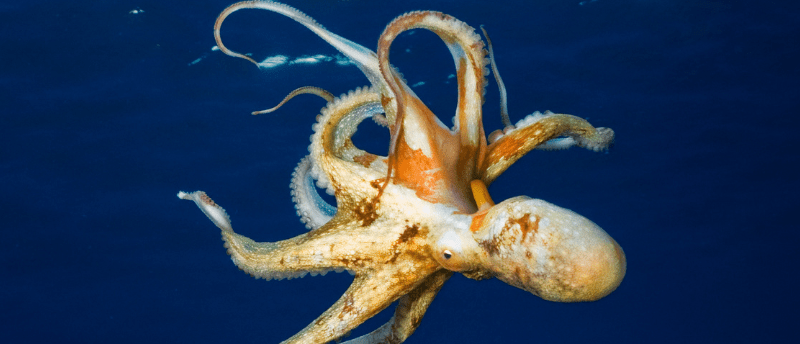Could microRNA expansion explain octopus brain development?

Scientists have demonstrated that cephalopods have an expanded number of microRNA families, which could explain how the complex octopus brain developed.
Octopuses and other coleoid cephalopods are unique among invertebrates because of the complexity of their brain and nervous system. Scientists at the Max Delbrück Center (Berlin, Germany) and Dartmouth College (NH, USA) have suggested that an expanded group of microRNAs (miRNAs) could explain how octopus brains evolved to have a range of cognitive abilities similar to those seen in vertebrates. This study opens a new avenue of research into the role of miRNAs in octopus brain evolution.
Octopus brains have intrigued scientists for a long time because they evolved independently of vertebrates. Their advanced nervous system had not begun to develop when the last known common ancestor for cephalopods and humans was alive. This common ancestor, a wormlike organism, had little intelligence and simple (if any) vision, so scientists have sought to identify how octopuses evolved to have such advanced cognitive capacities post their evolutionary divide from vertebrates.
This research project sought to build on previous findings that coleoid cephalopods, a group also including squid, can recode their RNA. To examine the role of RNA in octopuses more thoroughly, the team obtained 18 tissue samples. They sequenced the extracted RNA samples to test the hypothesis that RNA regulation could have an important role in octopuses’ cognitive success.
 What do octopus and human brains have in common?
What do octopus and human brains have in common?
Researchers identify the same active transposon in octopus and human brains, giving insight to these invertebrates’ intelligence.
Their results showed that miRNA expansion rather than RNA editing was more significant in octopus brain tissue. While the editing mostly occurred in uninteresting areas, miRNA expansion was found in the brain and other neuronal tissues. This discovery reflects similar findings in vertebrates; an expansion of these small, non-coding RNA molecules that bind to messenger RNA to modify gene expression occurred during vertebrate evolution. Senior author Nikolaus Rajewsky explained that this similarity to vertebrate evolution means miRNAs are probably fundamental to complex brain evolution in octopuses.
His team identified that the sites where miRNAs bind to messenger RNA were also highly conserved throughout the cephalopod evolutionary process. The scientists concluded that this further demonstrates the importance of miRNA in octopus brain development as the continued presence suggests a functional benefit to the animals.
First author Grygoriy Zolotarov explained that the findings were significant: “This is the third-largest expansion of microRNA families in the animal world, and the largest outside of vertebrates.” He added, “to give you an idea of the scale, oysters, which are also mollusks, have acquired just five new microRNA families since the last ancestors they shared with octopuses – while the octopuses have acquired 90!”
The researchers’ goal is to expand their octopus brain research alongside a growing number of other European scientists. Their plan is to improve the methodologies available to observe octopus tissue. “Since octopuses aren’t typical model organisms, our molecular-biological tools were very limited,” Zolatorov explained. “So we don’t yet know exactly which types of cell express the new microRNAs.”





